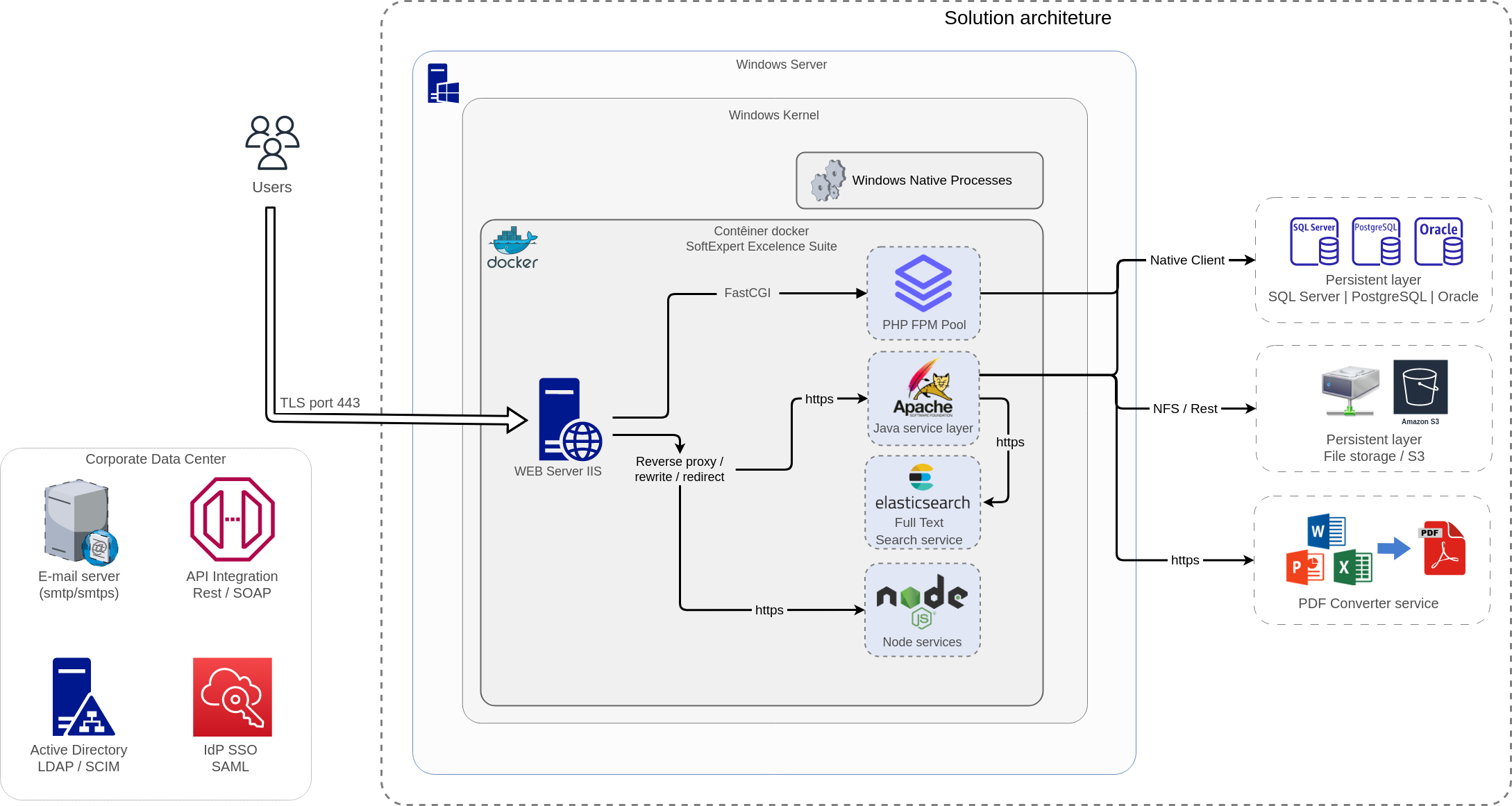SoftExpert Suite service architecture
SoftExpert Suite Windows architecture
This new installation model was fully designed from a study and created within a new project, seeking to solve issues that rendered previous versions more complex, gathering services into one single docker image that contains all requirements and necessary configurations for SoftExpert Suite to operate in the Windows version.
The new format brings advantages by packaging the application, mapping all configurations of internal services, thus making updates to new versions easier. Reduced installation of dependences is an advantage as well, since, if a dependency needs to be installed or updated, this is done internally in the container image, without need for intervention or adjustment on the customer's part.
The base for installing the SoftExpert Suite product is a 2019 or 2022 Windows Server. On said server, the Docker service is installed, where a single container with the applications solution packaged is run.
The installation script executes the validations, such as those referring to Operating System version, pending updates, and guides progress based on these validations.
Requirements are installed as well, such as Docker, and the execution of these containers is activated in the Operating System.
After Docker is installed, the "engine-windows" image is downloaded, which will be responsible for several SoftExpert Suite services.
After the installation and configuration steps are taken and the container is started, the applications will run internally, using a Microsoft Internet Information Services (IIS) server, which will execute web requests on port 443; this server, in its turn, will pass on information to other services, namely:
- FastCGI to PHP-FPM - Executes requests to the PHP layer, for system operations.
- Reverse proxy / rewrite / redirect - Directed to Apache Tomcat, where the Java layer executes requests from the logic layer.
- Reverse proxy / rewrite / redirect - Redirects to the Node.js service, where it responds to Reactor for the graphical interfaces of the system.
The data persistence layer is connected by PHP and JAVA through a native client. This communication is established directly in a database that is installed in the Operating System or available on the network. The PostgreSQL, SQL Server and Oracle databases can be used (refer to the documentation on versions).
ElasticSearch (Full Text Search) is a service embedded in the SoftExpert Suite image and, internally, is accessed through HTTPS protocol.
If there are additional services, such as PDF Converter, connection is established through HTTPS protocol. This service can be installed in the same Operating System or made available via network for connection through the Java layer. In case of file persistence, there is the option of using an NFS network unit, or connection via AWS S3 API.
Communication with directory (Active Directory), authentication (SSO), API and e-mail services is established using application-native protocols.
